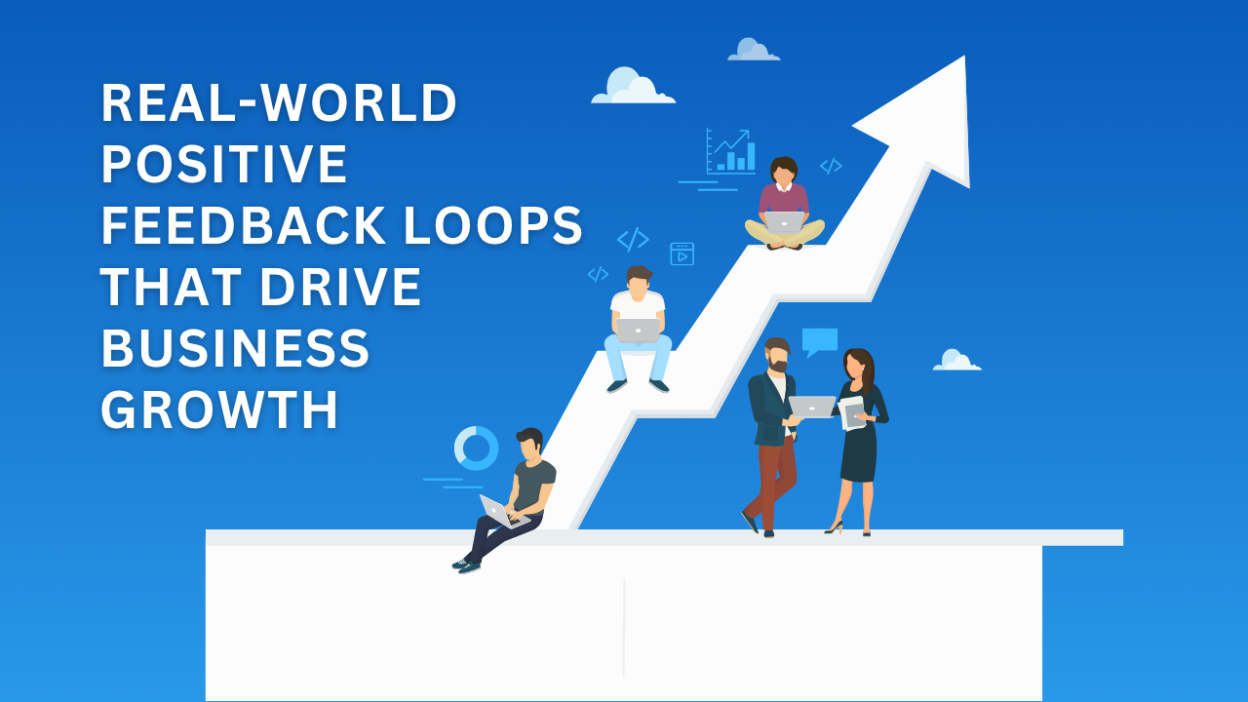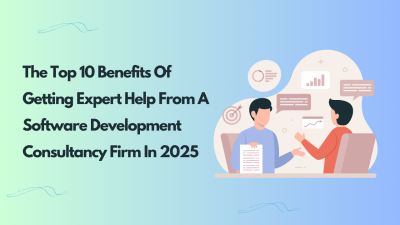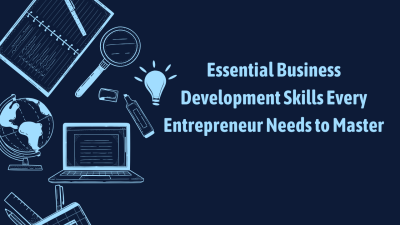When I think about how businesses grow, one thing always stands out to me: positive feedback loop examples. It’s like planting a seed and watching it grow into a tree that keeps producing more seeds. Each cycle gets bigger and stronger. In the tech industry, where I’ve spent many years leading Qtec Solution Limited with over 30 talented people, I’ve seen how these loops can help a business go from good to great.
In my experience, positive feedback loops are at the heart of sustainable business growth. These loops create a snowball effect. They take small efforts and turn them into something much bigger, something that can scale quickly and keep growing over time. I’ve watched how businesses that embrace these positive feedback loop examples can achieve things they never thought possible.
The purpose of this article is to break down how positive feedback loop examples have worked in the real world, and how you can use them to boost your own business. So, let’s dive into how these loops not only help businesses grow, but also help them keep that growth sustainable and ever-expanding.
Table of Contents
The Core Principles of a Positive Feedback Loop
When it comes to services, creating a positive feedback loop is essential for consistent growth. I’ve spent years refining this in my company, Qtec Solution Limited, and I’ve seen how powerful these loops can be when applied right. Here’s how I break down the core principles of a positive feedback loop in the service industry:
Initial Trigger or Action
Every positive feedback loop starts with a single action. This could be anything, from attracting your first batch of clients to offering a new service feature. The key here is that the action sparks engagement, which then sets everything else in motion. For example, when we launched a customer support service that offered fast resolution times, it triggered increased satisfaction among clients. As they experienced this enhanced service, they began recommending us to others, creating a continuous cycle of growth.
I’ve seen in some of the most successful positive feedback loop examples that this initial trigger doesn’t have to be huge, it’s more about creating an action that makes people excited and engaged.
Reinforcement of the Action
Once the initial action is set in motion, the next step is reinforcing it. This could be through personalized follow-ups, offering extra value, or simply providing outstanding service every time. I’ve always believed that delivering exceptional customer service, whether it’s through proactive communication or quick resolutions, keeps the loop growing. Each time we respond to a client’s needs quickly, they’re more likely to trust us with future projects, which in turn strengthens the relationship.
In many of the best positive feedback loop examples, this reinforcement happens naturally, like when great service leads to more positive reviews, which then fuels more customer engagement.
Escalation of Growth
This is where the real momentum kicks in. As the loop keeps going, growth becomes exponential. One satisfied client can lead to more, and their positive word-of-mouth further fuels the cycle. Over time, this results in faster scaling and more loyal clients. At Qtec, we saw that once we were able to consistently offer excellent support and service, it didn’t take long for our customer base to expand as they shared their positive experiences with others.
The most effective positive feedback loop examples I’ve encountered show how small, consistent actions can create a huge snowball effect that accelerates over time.
Key Metrics to Watch
To keep track of whether your loop is really gaining momentum, there are a few key metrics I always monitor. These include:
- Customer Satisfaction (CSAT): Are your clients satisfied with the services you provide?
- Referral Rate: How many customers are recommending your services to others?
- Customer Retention Rate: How often are clients coming back to use your service again?
- NPS (Net Promoter Score): Do your customers believe in your service enough to advocate for it?
- Growth in Service Requests: Are the number of inquiries or bookings growing over time?
By focusing on these metrics, you can gauge the effectiveness of your positive feedback loop and adjust strategies where necessary. It’s all about ensuring the loop stays healthy and keeps accelerating.
In my experience, applying these principles consistently has been key to unlocking sustained growth. When you keep an eye on these details, your service-oriented business can begin to see the powerful effects of positive feedback loops. The best positive feedback loop examples show how a well-timed action can create a continuous cycle of improvement, engagement, and expansion.
Real-World Example of Positive Feedback Loops Driving Business Growth
When I think about how a simple yet powerful positive feedback loop can drive business growth, customer referrals and word of mouth always come to mind. As someone who’s been in the tech industry for over a decade, I’ve seen how these loops can turn a small business into a massive success. Dropbox is a great example of how this works.
Dropbox’s Referral Program
Dropbox’s referral program is a textbook example of a positive feedback loop. When existing users refer new customers to the platform, they earn more storage space. Not only do the referrers get rewards, but the new users also get extra storage, creating a win-win situation. This simple idea turned Dropbox from a small startup into a major player in cloud storage.
How it Works
In my opinion, one of the best things about this approach is how it taps into customer advocacy. It’s one thing to acquire customers, but it’s another to turn them into loyal advocates who help spread the word. As users start referring friends and colleagues, they become more engaged with the product. And as the loop continues, more and more people join the platform, building brand loyalty with every new referral.
From my own experience, I can confidently say that positive feedback loop examples like Dropbox’s program show how effective word-of-mouth marketing can be. Once people start sharing their good experiences with others, you don’t just gain new customers, you build a loyal community of brand ambassadors.
The great thing about this loop is that it doesn’t stop after the first cycle. The more people who use Dropbox, the more referrals they’ll send, and that keeps the business growing. I’d recommend any company, especially in the service industry, consider creating a referral program like this. It’s one of the easiest yet most powerful ways to get your customers excited about your brand while driving growth.
Social Media Engagement Leading to More Content Creation (Content Marketing)
As someone who’s spent years building a tech company, I’ve seen how social media engagement can spark a positive feedback loop that benefits both the brand and its community. Platforms like Instagram and TikTok are perfect examples of how user-generated content can fuel brand awareness and create continuous growth.
User-generated content boosts authenticity
I’ve realized that when users create content about your product, it feels more authentic than any ad you could run. People trust their friends and peers more than any marketing message.
For example, on Instagram, when users share photos or videos featuring your product, it not only provides free content but also shows that real people are using and loving your brand. This kind of content creates a sense of social proof that’s hard to beat.
Increased engagement sparks more content creation
I can’t stress enough how engagement leads to more engagement. When users engage with your brand by posting their experiences, they’re encouraging others to do the same. I’ve seen it, when we encourage our customers to share their thoughts or experiences with our services, it doesn’t just stop with one post. Their followers see it, like it, and comment, which invites even more content creation. It’s like a snowball effect, and it just keeps rolling.
A cycle of content creation and consumption
This constant loop of content creation and consumption is where the magic happens. I’ve learned that the more content your customers create, the more others consume it, leading to greater engagement and brand awareness. It becomes a self-perpetuating cycle that builds your brand with minimal effort on your part. The more people see others enjoying your product, the more likely they are to try it themselves.
Social proof increases brand loyalty
What really hits home for me is how social proof created by these positive feedback loop examples leads to greater brand loyalty. When potential customers see real people using your service or product, it builds trust. I’ve found that this trust doesn’t just convert them into customers; it turns them into long-term advocates who are likely to share their own experiences, feeding the loop again.
From my experience, positive feedback loop examples like this are some of the most effective ways to organically grow your brand. I highly recommend creating opportunities for your customers to engage with your brand on social media. It’s an easy, fun, and impactful way to generate buzz and increase loyalty.
Customer Feedback Leading to Product Innovation (Product Development)
As a tech entrepreneur, I’ve witnessed how customer feedback can be a game-changer for driving product innovation. Listening to your customers is essential for creating a positive feedback loop that fuels ongoing product improvements and greater customer satisfaction.
Customer feedback drives meaningful product improvements
I’ve learned that actively seeking customer feedback is one of the most valuable strategies for refining a product. Companies like Tesla and Amazon do this exceptionally well. They actively encourage users to share their thoughts, which they then incorporate into new versions of their products.
At Qtec, we use client feedback to refine and enhance our software offerings. This iterative process helps us deliver a product that constantly improves based on real user needs. I highly recommend that any business, especially in tech, implement a feedback loop where customers can directly influence product development.
Increased customer satisfaction fuels the feedback loop
The beauty of customer-driven product innovation is that the more you improve, the more customers are satisfied, and the more likely they are to provide even more feedback. This creates a positive feedback loop that amplifies over time. When we take action on the feedback we get, it builds customer trust and loyalty.
Happy customers are more likely to leave positive reviews, share their experiences, and offer suggestions for further improvements, which keeps the cycle of innovation going.
Product development becomes a continuous process
I’ve found that product development shouldn’t be a one-off project; it should be a continuous journey. The positive feedback loop examples created by regular customer engagement ensure that your product evolves and adapts in real-time to meet user needs.
Each feedback cycle brings new insights that lead to better features, which in turn encourages more feedback and further development. This never-ending cycle of improvement is what drives long-term growth. In my experience, positive feedback loop examples like those used by Tesla and Amazon show that constant innovation is the key to staying ahead in competitive markets.
I can’t emphasize enough how critical customer feedback is in driving innovation and improving customer experiences. By making it a priority, you not only enhance your product but also build stronger, more loyal relationships with your customers. I suggest businesses embrace feedback loops to continuously develop products that meet evolving customer expectations. It’s a surefire way to keep your company growing and thriving.
Brand Loyalty through Exceptional Customer Service (Customer Retention)
As a tech entrepreneur, I understand the true value of brand loyalty and how it can drive repeat sales and long-term business growth. Exceptional customer service is a critical part of this, and I’ve seen firsthand how it creates a positive feedback loop that not only retains customers but also turns them into passionate brand advocates.
Exceptional customer service fosters loyalty
In my experience, providing outstanding customer service isn’t just about solving problems, it’s about creating experiences that customers value. Zappos is a perfect example of a company that has made customer service its number one priority.
They’ve built a positive feedback loop where customers feel genuinely cared for, which leads to repeat business and ultimately, loyal customers. The more Zappos delivered exceptional service, the more their customers came back and shared their experiences, spreading positive word-of-mouth.
Creating a cycle of customer retention
I’ve found that the more a company focuses on creating positive customer experiences, the more likely it is to retain those customers long-term. When you exceed expectations consistently, it builds trust and satisfaction. This in turn makes customers more likely to return and recommend your business to others, fueling the cycle even further.
Over time, these satisfied customers become your best brand ambassadors, sharing their positive experiences and helping to drive growth. This is exactly how a positive feedback loop example works in practice—where the better the experience, the stronger the customer relationship.
From my own experience, focusing on customer service has been one of the best ways to retain clients and build brand loyalty. When you treat your customers well and make them feel valued, you not only retain them but also inspire them to promote your brand. I recommend that any business invest in creating exceptional customer experiences to foster long-term loyalty, as it’s one of the most effective ways to drive growth.
How Technology Accelerates Positive Feedback Loops
Having worked in tech for over a decade, I’ve seen how technology can supercharge positive feedback loops, driving increased engagement, satisfaction, and growth. Tools like AI, automation, and machine learning play a huge role in creating these cycles of improvement.
- Automation and AI in Customer Interaction
I’ve seen how tools like chatbots and personalized recommendations engage customers in real-time, improving satisfaction and encouraging repeat visits. These positive feedback loop examples show that the more businesses interact with customers through automation, the more loyal customers become, creating a cycle of continuous engagement. - Data-Driven Decisions
Using data analytics helps businesses identify which feedback loops are working best. I’ve learned that analyzing customer behavior allows businesses to optimize their strategies and improve the customer experience, leading to stronger and more effective positive feedback loop examples over time. - Machine Learning Algorithms
Machine learning personalizes experiences by predicting customer preferences based on past behavior. This not only improves satisfaction but also creates a positive feedback loop where personalized experiences lead to more engagement, driving further sales and long-term customer loyalty.
From my perspective, these technologies are essential for businesses aiming to build sustainable growth. They not only streamline operations but also enhance the customer experience, leading to stronger, more impactful feedback loops.
The Role of Scalability in Positive Feedback Loops
When designing positive feedback loops, scalability is essential for long-term growth. A feedback loop that works in the early stages can evolve into something even more powerful if it’s built with scalability in mind.
- Building for Long-Term Growth
I’ve found that creating feedback loops that can scale with your business ensures that growth continues as customer needs evolve. The best positive feedback loop examples are designed to adapt and grow alongside the business, ensuring sustainable value over time. - Optimizing Customer Acquisition Cost (CAC) through Feedback Loops
Positive feedback loops are crucial for reducing Customer Acquisition Costs (CAC). By focusing on customer satisfaction and loyalty, businesses can leverage existing customers to bring in new ones, lowering acquisition costs. The more customers stay engaged and satisfied, the more likely they are to refer others, which in turn boosts lifetime value (CLTV) and keeps CAC low.
Building scalable feedback loops is essential for long-term success. I recommend focusing on designing systems that grow with your business, optimizing costs, and driving continuous value for both your customers and your company.
Overcoming Challenges in Creating Positive Feedback Loops
Building and maintaining positive feedback loops can be tricky. I’ve seen businesses face challenges, but with the right strategies, it’s possible to keep the loops effective and scalable.
- Avoiding Loop Fatigue
I’ve noticed that feedback loops can lose momentum over time if they aren’t refreshed. To avoid loop fatigue, it’s important to continually innovate and adapt. Introducing new incentives, updating features, or improving customer experiences can keep the cycle fresh and engaging. The best positive feedback loop examples I’ve seen are those where companies consistently evolve their strategies to keep customers excited and involved. - Managing Customer Expectations
Managing customer expectations is crucial when scaling a feedback loop. I’ve learned that striking a balance between driving growth and maintaining quality service is key. Over-promising can lead to customer dissatisfaction, so it’s important to set realistic expectations while delivering exceptional service. This ensures that customers stay loyal and continue to engage, feeding the loop positively. - Data Privacy and Ethical Concerns
In today’s data-driven world, it’s essential to handle customer information ethically. I believe that collecting data transparently and responsibly is vital to building trust. Ethical practices ensure that customers feel comfortable providing feedback, which in turn fuels the positive feedback loop. Ensuring data privacy and maintaining transparency are cornerstones of building lasting customer relationships.
Overcoming these challenges requires consistent effort, but by focusing on these key areas, businesses can create feedback loops that not only thrive but also build a strong, loyal customer base.
Actionable Strategies for Building Your Own Positive Feedback Loops
Building positive feedback loops that drive long-term growth requires careful planning. I’ve learned that starting small and scaling gradually is key to creating a sustainable loop that brings value over time.
- Start Small, Scale Gradually
I recommend starting with a manageable feedback loop and expanding as you see success. This allows businesses to test and optimize without feeling overwhelmed. By scaling gradually, businesses can ensure they’re building a strong foundation before expanding their efforts. The best positive feedback loop examples I’ve seen begin with small, focused actions that can be scaled as they prove successful. - Focus on Customer Experience
In my experience, providing great customer experiences is the core of any effective feedback loop. When you focus on user satisfaction, convenience, and personalization, you create loyal customers who are more likely to engage and provide valuable feedback. By ensuring every touchpoint is positive, businesses can lay the foundation for strong and lasting feedback loops. - Test and Iterate
I always recommend testing and iterating on your feedback loops regularly. It’s essential to monitor the results, identify areas for improvement, and make adjustments. Constant iteration ensures that your feedback loop continues to evolve and stay effective, delivering better results over time. - Leverage Technology for Efficiency
Using tools like CRM systems, AI-driven insights, and automated email sequences can help streamline feedback loops. In my own experience, these technologies make it easier to manage large volumes of customer interactions and ensure that feedback is captured and acted upon efficiently. This allows businesses to focus on what matters most: improving the customer experience.
By implementing these strategies, I’ve seen businesses successfully create feedback loops that drive growth and customer loyalty. I recommend starting small, focusing on customer experience, and using technology to make the process more efficient—this is a proven way to build effective and scalable positive feedback loop examples.
The Future of Positive Feedback Loops in Business Growth
Looking to the future, I see that positive feedback loops will continue to evolve, especially with the rise of new technologies and shifts in consumer behavior. As I’ve seen, staying ahead of trends and adapting to changes is essential for maintaining a strong, growing business.
- Trends to Watch
In my experience, emerging trends in AI, automation, and customer experience are revolutionizing how businesses build and maintain feedback loops. AI allows businesses to personalize interactions on a massive scale, while automation streamlines customer engagement, making it more efficient. These trends will only strengthen positive feedback loop examples, allowing businesses to create even more effective cycles that drive continuous growth. - Adapting to Changing Consumer Behaviors
Consumer behaviors are constantly evolving, and businesses need to stay adaptable. I’ve seen companies that thrive by continuously adjusting their feedback loops as market conditions shift. Whether it’s responding to new customer preferences or adapting to changes in technology, the most successful businesses are those that evolve with their customers, ensuring their feedback loops remain effective and impactful.
Looking ahead, I believe businesses that keep pace with these trends and adapt their strategies accordingly will continue to create powerful positive feedback loop examples that drive growth and customer loyalty. By embracing innovation and staying responsive to market changes, companies can ensure long-term success.
Conclusion
Positive Feedback Loops are one of the most powerful tools for long-term business growth. They take simple actions like great service or helpful content—and turn them into cycles that build momentum over time. I’ve seen how just one loop, done well, can transform a business from stable to scaling.
The key is to stay consistent, listen to your customers, and keep improving based on real feedback. If you’re looking to create sustainable success, building even one strong feedback loop can be a game-changer. Start small, refine often, and let the results speak for themselves.
Frequently Asked Questions
What is a Positive Feedback Loop in business?
A Positive Feedback Loop is a system where success leads to more success, like happy customers bringing in more customers.
How do Positive Feedback Loops help growth?
They multiply impact—small wins stack into long-term growth through repeat engagement and referrals.
Are Positive Feedback Loops only for big companies?
No, startups and small businesses can build effective Positive Feedback Loops with simple, scalable systems.
What’s a real example of a Positive Feedback Loop?
Dropbox’s referral program is a great example—users share it, get rewarded, and bring more users in.
How can I start creating Positive Feedback Loops?
Begin with strong customer experience, ask for feedback, and design systems that reward and repeat engagement.




